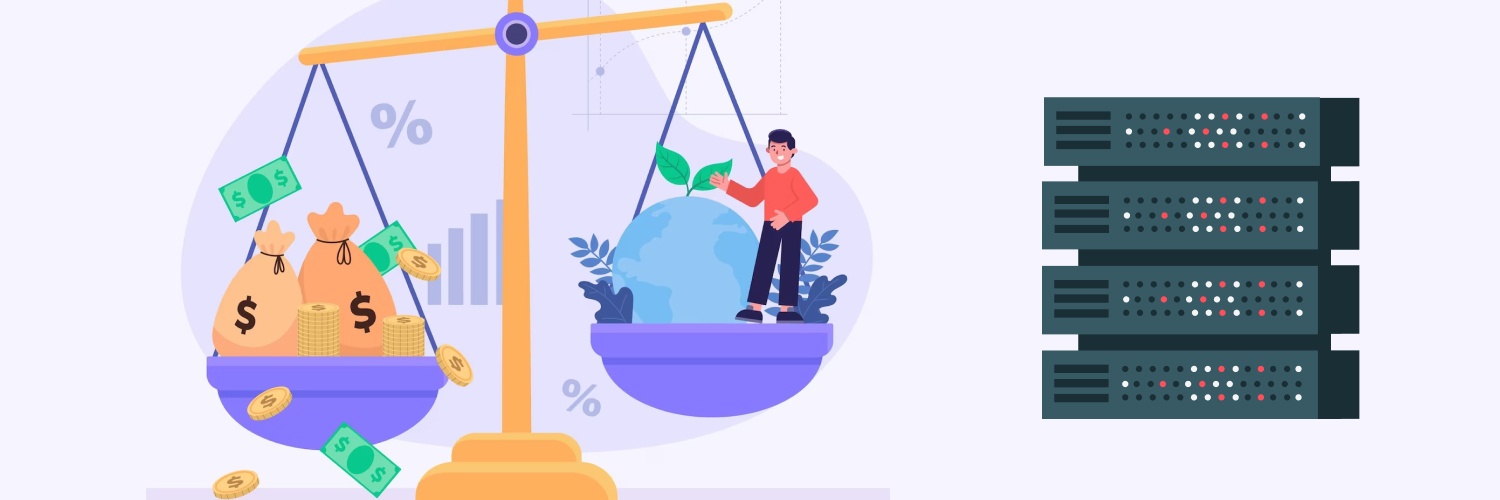eCommerce SEO: How It Can Benefit You And Your Business
Visibility is everything in the e-commerce industry. According to recent data, there are over 2.14 billion online shoppers across the globe, making up 27.6% of the worldwide population. This means at least one out of every four customers is a digital buyer. Chances are, many of these people could be interested in what you’re offering. But how do you get your products or services in front of them?
There are several answers to that question. Numerous methods can help you gain visibility on the internet these days — some more effective than others. But while you could pay for online ad placement across different platforms, experts claim that organically reaching your target audience is the best approach. Enter e-commerce SEO.
The proper search engine optimization (SEO) strategy will drive traffic to your store, boost sales, and increase revenue. This article will help you understand e-commerce SEO, the best ways to implement it, and how to use proxies to improve your e-commerce SEO efforts. If you’re not new to the topic, feel free to skip ahead using the table of contents below. Let’s dive in!

eCommerce SEO at a Glance

Search engines have multiple pages to explore, but who looks beyond the second or third? The key to thriving on the vast, competitive internet is being easily accessible to your ideal customers. The further your e-commerce store is from those initial 10 search engine result pages (SERPs), the less traffic you’ll generate.
Less than a decade ago, studies revealed that at least 4.8% of searchers made it to the second SERP, but only 1.1 made it to the third. A lot has changed since then. Nowadays, only the sites on the first page receive 95% of all traffic, leaving only 5% to pages number two and beyond.
But that’s not all. Your site’s position on that first page also has a say in how much traffic you’ll get. The first 10 results get the following click-through rate:
- 28.5%
- 15.7%
- 11.0%
- 8.0%
- 7.2%
- 5.1%
- 4.0%
- 3.2%
- 2.8%
- 2.5%
A good e-commerce SEO plan will drive more leads from SERPs to your site, bringing many benefits. The best part: it’s free — unless you hire someone to do it or invest in a couple of tools to maximize your SEO strategy’s potential. But let’s not get ahead of ourselves.
What is e-commerce SEO?
E-commerce search engine optimization — or e-commerce SEO for short — is the process of organically ranking higher on most major search engines. An e-commerce SEO strategy doesn’t rely on paid ads to get to the first few SERP spots.
This doesn’t mean there’s anything inherently wrong with paid ads, but organic search is more likely to lead your ideal audience to you. After all, they’re the ones typing out the necessary keywords to make it happen, meaning they’re actively looking for a product or service like yours.
So yes, you could get traffic from paid ads, but e-commerce SEO is much cheaper. Besides, most people have trained themselves to ignore ads completely as they scroll through search results. Others use ad blockers to avoid being “sold to” constantly. In addition, there’s something about e-commerce SEO and organic search results that make a brand seem more trustworthy.
Although you can complement your e-commerce SEO strategy with paid ads, you’ll want to optimize for organic search just in case. Otherwise, you could end up looking too desperate in your efforts to drive traffic and increase your sales. In e-commerce marketing, that’s never a good look.
What’s involved in e-commerce SEO
E-commerce SEO doesn’t have to be rocket science, but it does have many layers, each equally or more important than the last. A neat strategy involves optimizing headlines, metadata, product descriptions, navigational and internal link structure, user experience, and more. A dedicated page for each product boosts your chances of getting discovered by more people.
Additionally, it’s important you pay attention to all static pages, even when they’re not product-oriented. Your e-commerce SEO strategy must also focus on your home page, FAQ section, About page, native content, etc.
But wait, is e-commerce SEO the same as regular SEO?
Yes, and no.
E-commerce SEO does include the basic concepts of search engine optimization. Yet, it also has online shop-specific guidelines that may be irrelevant to other types of sites.
For starters, a non-commerce website may not even have a category page, and an e-commerce site could use blogging entirely different from websites that don’t offer products or services. With that in mind, e-commerce SEO must be tailored to your specific visibility-enhancing needs.
Why is SEO important for e-commerce?
When consumers need a specific product or service, they typically turn to their favorite search engine. Doing so helps them sort out the most basic and relevant question: “Where do I find what I’m looking for?”
Once the answer is clear, and their search query displays possibilities, the results on the first couple of SERPs will give them numerous choices, comparisons, reviews, tips, and more. This information will ultimately empower them to decide where they’ll be putting their money. However, people online have become more impatient, or lazier — or maybe both. They crave immediacy, so they won’t go past a few options before reaching their final verdict.
If your store doesn’t conveniently appear among the first 10 SERP results, it’s unlikely to get the attention it deserves. Therefore, it won’t generate enough traffic to attract the buyers you need to succeed. Besides, not having a strategy to attract visitors is like throwing all your store-building efforts down the drain. Losing qualified leads you could potentially convert into loyal customers is one of the biggest tragedies you could face in today’s digital shopping world.
Having a space online is not enough for your business to flourish. You need to be findable. And how do you achieve that? With a proper SEO approach, of course. The rest comes naturally once you get the right people to your site.
What Are the Benefits of eCommerce SEO?

Search engine success doesn’t happen overnight. It could take several months or even years to see the results you want, especially when not using the right tools. Setting up an e-commerce SEO strategy brings a lot to the table, and it may be the fastest route to attracting more visitors to your store. It will help you:
Improve your user experience
The leading search engine considers user experience (UX) one of its more important ranking factors. This means that the efforts you put towards helping people find you online actually pay off. When you take the time to find the keywords your target audience is using and answer questions they may have, you become more likely to rank higher.
Besides, providing a better UX makes your site more engaging to existing and potential customers. Spending time on your site is another factor in ranking among the top spots on the list.
Reach a wider audience
Driving more traffic to your site will naturally expand your reach. Organic visitors are more likely to stay on your site and even provide their contact details in exchange for product information, promo codes, or anything they deem valuable. This trade allows you to target them later via paid campaigns or other digital marketing strategies.
In addition, customers that have a pleasant experience on your site, whether exploring their options or finalizing a purchase, are more likely to recommend you to their friends and family. Referrals and positive reviews will earn you a lot more business, but you won’t get them if you don’t drive enough traffic to generate quality leads in the first place.
Increase brand awareness
People Also Ask (PAA) boxes are an excellent way to get more traffic through SERPs and boost your brand awareness. They are a dynamic search engine feature that contains collections of questions related to the searcher’s original query. Once a user clicks one of the questions, the PAA box expands to display a brief text snippet and the source’s URL, which serves as a shortcut to the site with the answer — it could be yours if you play your cards right.
Data reveals that 43% of search queries now show a PAA box. To rank there, you certainly need solid e-commerce SEO tactics. Making on-page optimizations will let the algorithm score you higher and see your PAA worthiness so that they can use you as a reputable source.
Challenges of e-commerce SEO
When optimizing an online store for e-commerce SEO, most people overlook quality. It’s easy to assume that the more content you put out there, the better. However, content quality plays the most important role.
If you copy-paste information from the manufacturer or create product descriptions with little to no substance, you’re harming your case. Search engines will immediately catch the lack of effort, and you’ll rank lower.
Another common mistake e-commerce entrepreneurs often make is forgetting about all things technical. To increase the likelihood of a site ranking among the first SERP listings, admins need to consider aspects like:
- Mobile-friendliness
- Page loading speed
- Site security
- Indexation
Keeping all this in mind and implementing the right SEO solutions is the fastest route to reaping the benefits of e-commerce SEO.
How To Optimize an eCommerce Website for SEO

Now that you know the primary benefits of implementing an e-commerce SEO strategy to rank higher on SERPs, it’s time to work. Below you’ll find the main areas you need to focus on to make your e-commerce store more visible.
Words matter: do your keyword research
As mentioned earlier, keywords are an essential factor that could keep you from sinking under a sea of online options. It should come as no surprise that the first step in this tutorial is dedicated to keyword research.
Identifying high-value search terms your target audience uses will increase your chances of being found. However, before you begin your investigation, you need to understand that e-commerce keyword research is different from non-commerce keyword research. E-commerce sites don’t care about informational keywords but commercial ones.
Look for options that show buying intent. This way, you can craft context that drives traffic and increases conversions. When looking for the right keywords, consider these three types:
Short-tail keywords
These are stand-alone words that may be related to your product or service. Although they get the most searches, these terms are generally hard to rank. Additionally, they tend to have the most competition.
Middle-tail keywords
These terms are great for e-commerce SEO. They usually have three to four words and account for a decent amount of searches with moderate competition.
Long-tail keywords
These terms typically have over five words, making them rarer in the keyword realm. As a result, they have a high conversion rate and low competition, but they yield the least search traffic.
See what your customer’s favorite search engines suggest
Most search engines have implemented an autocomplete feature. When starting to type an inquiry, users may get the most popular searches that include those terms. This guesswork is an attempt to spare users the fatigue of typing a complete sentence or help them enhance UX and find what they’re looking for much faster.
As a store owner, you can use this feature in your favor. Not only will it eventually lead you to your main competitors so that you can see what they are doing, but it will also identify what most users are looking for and how.
You can use this same technique on your favorite e-commerce platforms. After all, most of them have internal search engines to help clients find the products they’re looking for. Most platform internal search engines are product-focused, making their relevant inquiry suggestions more relevant to your product or service. The more specific a search term is, the higher the conversion rates it may yield.
Be aware that, although effective, this process may be time-consuming. You can benefit from using automatic web scraping tools to conduct your search engine keyword research for you. This will allow you to pull higher volumes of information in a shorter time.
Choose the right keywords for your specific products
So you’ve found the most competitive keywords in your market. Now what? Having a bunch of terms handy is not enough to optimize your site. You need to assess the quality of each so that you can narrow down your list and focus on the terms that will attract more views.
The crucial factors you need to consider are:
- Volume: Keep it high.
- Competition: Keep it low.
- Intent: Keep things commercial.
- Relevance: Keep terms related to what you’re selling.
Based on this, the equation for success is:
High volume + low competition + high intent + high relevance = higher SERPs ranking
Enhance your e-commerce site structure
How your pages are structured and organized is a big deal for e-commerce SEO. That’s why it will ultimately help define your SERP ranking. Why? Because they’re decisive factors that determine whether your site’s UX is first-result material.
An organized and well-structured online shop is easy to navigate and entices customers to finalize a purchase. It will also make it easier for search engine algorithms to find pages to rank for specific keywords.
Your structure can get intricate as you add more products or services to your store. Getting your site structure right from the moment you start planning your store categories will save you a lot of time. Make sure the structure you pick is scalable so that it can grow along with your business. Yet, keep it simple to spare yourself any unnecessary headaches down the line.
The goal is to ensure each page on your site is just a few clicks away from your homepage. That’s where your link authority lies. The further away a page is from the home base, the less authority it has.
Your site must follow a logical path. This way, users can quickly backtrack without relying too much on the back arrow. Design your site with your customer’s comfort in mind, and everything will make more sense as you go and grow. A neatly organized site will also help you detect and avoid duplicate content.
Implement your on-page e-commerce SEO correctly
Some e-commerce platforms have built-in SEO features to help make store managers’ lives much easier. However, if you’re building your store from scratch on your website, things may get a little trickier, as you’ll need to DIY your SEO efforts.
Some of the e-commerce SEO aspects you’ll want to keep in mind are:
- Canonical tags
- Social media integration
- Title tags
- Metadata
- Images
- Alt text
- URLs
All these factors will help you convince search engines to give you more visibility. Once you’ve achieved that, persuade your customers to click through your site.
Pick user-friendly URLs
Your customers are humans, not machines. With that in mind, you need to craft URLs that are easy for them to remember and access. Keep things short (between 50 and 60 characters), and remember that using your main keywords in your URLs could help you show up in SERPs.
You don’t have to include your entire page title in your URL. Also, avoid using stop words like “a,” “the,” “of,” “and,” etc., unless they’re an essential part of your primary keyword. Remember that the keyword stuffing rule applies to URLs too, so take it easy with the number of terms you include.
Create substantial and unique product descriptions
Thin content is public enemy number one to a solid e-commerce SEO strategy. That’s because it prevents search engines from finding enough meat to determine whether your pages should rank higher. If your product pages have only a few words, plagiarized or duplicate information, and no identifiable keywords, they will rank lower.
Keep your product descriptions unique and with enough details to catch the search engines’ attention — and your customers’ while you’re at it. Don’t forget to include relevant keywords naturally so that the search engine can gain a deeper understanding of what you’re advertising. Finally, focus on your best-sellers and keep products with a lower performance last.
Keep content helpful and meaningful
Taking advantage of keywords to rank higher is one thing, but using unrelated terms just for added visibility will anger your potential buyers. There are fewer things more annoying than wasting valuable time exploring an item’s page to learn it has nothing to do with what’s advertised. In this case, as your annoyed visitors leave in droves, this strategy will send you right to the bottom of the list.
Once you’ve made sure your content matches your product, you need to make it easier for customers to scan. Nobody has time to read endless paragraphs these days. Keep your product descriptions easy to skim so that users can find the information they’re looking for faster. Use short sentences and paragraphs, and add bulleted lists whenever possible.
Your product pages should be your primary focus in your e-commerce optimization strategy. That’s where you want to add information, not only through text but through elements like:
Optimized images
Consumers are more likely to buy products when pages accurately depict them. They say an image says more than a million words, so imagine what pictures from every angle could do for you.
Image quality matters. People want to see what your product looks like, and a small, pixelated pic won’t do the trick. Search engines also consider images when scoring your site towards a better SERP positioning. Therefore, to optimize your product pics for e-commerce SEO, you need to:
- Put the primary keyword in the file name. For example, instead of naming an image IMG001.png, consider something like high-rise-paper bag-shorts.jpg.
- Add more keywords on additional pictures. If you have photos from every angle, name them differently using related keywords.
- Use the product name and keywords within the ALT text for the image. This will expand your reach by making your site more accessible.
Optimized video
Images are great for showcasing how your product looks, but moving pictures are even better. Adding a video to your product page will give customers a better sense of your product’s appearance in real life, its use, etc.
Your video can be either educational or serve as social proof. Adding testimonials from people who have tried your product and loved it will give you bonus points for building trust among your visitors.
A good strategy is to post videos off-site on platforms with more reach and social media to attract more potential buyers. This can drive your followers to your site and encourage them to share your content with their inner circle.
Creating content that gives added value to your brand is an easy way to bond with your clients. You should aim to make them feel like they walked away with new knowledge, a good time, or inspiration.
Real customer reviews
Word of mouth is a powerful marketing tool. Consumers tend to listen to what other people have to say about a product before making their final purchase decision. Encouraging customer reviews is an excellent way to increase customer confidence in your offering.
In addition, reviews give you the means to interact with your customers. You can respond to compliments to make sure they know you appreciate them. In contrast, you must acknowledge negative comments to make your unsatisfied clients feel seen and heard. Engaging with your customers will keep them on your site or bring them back, which is important for ranking higher in SERPs.
Create click-worthy title tags
The first thing your potential buyers will see when they find you online is your title tag. You need to make it attractive to boost your chances of attracting new customers and persuading them to click on your listing.
Title tags also help search engines understand the context of your site. You must keep them relevant to your product and include your main keyword when possible.
Write enticing meta descriptions
A meta description is a short piece of text that appears under your title tag in the search engine. Although it’s typically no longer than 160 characters, it has more impact than you think.
An exciting meta description will allow your audience to learn more about your offering before clicking. If you keep it compelling enough, it can be one of your most powerful weapons for driving traffic to your store.
Secure your store’s site
There are numerous reasons why e-commerce sites need to be secure. They collect sensitive information from hundreds of users and could be subject to attacks from malicious actors. That’s why SERPs reward security protocol implementation on e-commerce sites by bumping you a few spots up the list.
You can use data encryption to make your customers feel more confident about buying and paying through your site. You could apply for a secure sockets layer (SSL) certificate so that nobody can access your customer’s data. This action will add HTTPS before your site’s domain, making you eventually rank higher.
Don’t forget your homepage SEO
It’s easy to forget about your homepage. While it’s not the page you’ll want to focus more time, money, and energy on, you’ll still need to give it some SEO maintenance from time to time. Much like product page optimization, homepage optimization must consider:
- Title tags
- Meta descriptions
- Content
However, it’s important to remember these elements need to convey your site in a nutshell. Don’t forget to include your main keyword and avoid overloading visitors with too much information at a glance.
Focus on your internal linking strategy
Internal links will help you show your customers how your pages relate to one another. They will increase the time each visitor spends on the site by encouraging them to keep exploring.
If you’ve implemented a blog on your site to give your clients some added value, you can use your content to promote your products and other blog entries. This will improve your e-commerce SEO by making your pages more engaging.
Think of attractive product names
You’ll be using your product names a lot in your titles and URLs, so make it count. A memorable name will make it easier for your customers to use the right keywords to find you. Creativity is not always necessary, and sometimes the most simple names will get you the most visits. For example, if you’re selling plastic bottles, including “plastic bottles” or “PET bottles” will give you more reach than using a made-up word.
Integrate responsive mobile-first design
Most users shop through their mobile devices nowadays. Data suggests that up to 79% of smartphone users have made an online purchase through these devices in the last six months. That’s why site responsiveness is vital to enhancing UX, and the leading search engine has implemented mobile-first indexing to rank sites in SERPS.
Good, responsive design allows your pages to adapt seamlessly to your visitors’ mobile devices. It enables all elements on your site to scale and shift to offer a flawless experience to your customers. If you don’t implement mobile optimization, you might not gain a competitive edge over your market rivals.
Use schema markup to highlight your products
Including schema markup code in your site’s HTML will boost the chance of your favorite search engine showing features from your site. This allows you to increase customer engagement by displaying what they need to make more informed decisions.
Minimize loading speeds for your pages
Search engines prefer sites that load faster. As mentioned earlier, they want to guarantee the best UX possible, so they’re unlikely to recommend a site that takes forever to display the information.
Simplicity is underrated when creating an attractive website. Get rid of any unnecessary elements that may be slowing things down, including large images, add-ons, and plugins that do nothing for your business’s bottom line. you can significantly improve your page speed by:
- Hosting videos on third-party sites
- Compressing heavy images and files
- Cleaning up your code
- Reducing redirect amount
- Enabling browser caching
Create backlinks
When learning how to do SEO for e-commerce websites, you can underestimate the value of backlinks. Linking to high-quality sites makes yours more authoritative, especially if your choices rank high in SERPs.
How To Improve eCommerce SEO

E-commerce SEO may seem like a resource-intensive, time-consuming task for those new to it. However, succeeding with e-commerce SEO is easier than you might think, even if your store has been around for a while and is already populated with dozens or hundreds of products.
It will take time to optimize your site thoroughly. There’s no other way around it. However, using the right tools and implementing a plan will expedite and simplify the process. Some steps you can’t miss when crafting your e-commerce SEO strategy or providing e-commerce SEO services for third parties include:
- Prioritizing the pages that require the most traffic.
- Focusing on flagship products and optimizing them before anything else.
- Creating a bulletproof workflow.
- Checking out what the competition is doing regarding SEO.
Keywords may be the core of an SEO strategy, but finding the right ones won’t matter if you overload your descriptions with them. In this case, less might not be more, but you’ll certainly benefit from finding a balance. Remember, some search engines penalize keyword stuffing.
Must-Have Tools for eCommerce SEO Services

If you want your e-commerce SEO strategy to work correctly, you need to conduct serious research. Some e-commerce entrepreneurs turn to keyword search APIs, backlink research sites, and even web scraping bots to extract valuable information from the web that will allow them to gain an edge over rival businesses. Whatever data extraction method you choose for your keyword, competitor, and URL research, you can noticeably improve your results when using the right SEO proxies.
A proxy will serve as an intermediary between the client — aka you— and your sources. This e-commerce research tool will make your keyword gathering endeavors much easier. It will protect your identity online and keep your network safe as you search the internet far and wide for the terms that will bring the most clicks.
Rayobyte offers customers state-of-the-art proxies that allow you to bypass common anti-scraping and geographical restrictions, among other pitfalls. Our products enable you to mask your IP to prevent getting blocked or banned.
Our top offers are:
Data center proxies
These proxies are perhaps the most common type on the market. Unlike residential proxies, they come from a data center and are not associated with an internet service provider (ISP).
Data center proxies serve as an intermediary between your computer and the site you aim to extract data from. Whenever you send a new request, it goes through the data center first and gets sent to the site’s server with a different IP before making its way back to you.
While data center proxies can effectively mask your identity, their “synthetic” nature could make them easier to identify by servers. You may need to keep a proxy rotation to prevent your keyword research or competitor analysis from being interrupted.
Data center proxies are faster, cheaper, and more available than other proxies. Rayobyte offers data center proxies located in more than 20 different countries. We have nine autonomous system numbers and 20,000 unique subnets, and 300,000 IP addresses to provide you with a greater rotation to keep bans at bay.
Rayobyte’s data center proxies have unlimited bandwidth and come with free replacements. This feature helps increase your uptime to get the information you need when you need it.
Residential proxies
Residential proxies are the most similar to a regular internet service provider IP. They are tied to a physical address, much like your home’s or your business’s, and can be relatively undetectable online. That’s because website admins cannot tell the difference between them and the real deal when used correctly. You’ll need to avoid bot-like behavior that could give you away, especially when amassing large volumes of data.
This type of proxy comes from people like you who agree to let others use their IP addresses for different online activities. However, you must ensure your provider offers only ethically sourced residential proxies if you don’t want unnecessary trouble down the line.
Rayobyte protects your security and your brand’s reputation by enforcing ethically sourced proxies. Our products are versatile, reliable, and optimized for web scraping. In addition, we have a team of professionals dedicated to backing you up and providing you with tailor-made solutions so that your data extraction projects are successful.
ISP proxies
These proxies are a type of data center proxy that mimics a residential proxy. Therefore, ISP proxies have the best of both worlds. They offer complete anonymity, with data center speed and bandwidth but with a lower blocklisting risk. When sending requests to any website or platform, they’re recognized as real IPs rather than computer-generated.
Rayobyte’s ISP proxies allow location selection between the UK, the US, and Germany. They offer endless bandwidth and connections and provide unmatched diversity.
We can guarantee maximum redundancy thanks to our eight real IP Autonomous System Numbers (ASNs). Additionally, our partnerships with some renowned ISPs allow us to rotate your proxies in case a site’s anti-proxy protections block the ASN you’re using.

Final Remarks: Why Invest in SEO Services for eCommerce?

The guide above demonstrates why you need e-commerce SEO to thrive in business in this day and age. This marketing strategy element allows you to get people to your site and convert them into loyal buyers. Ultimately, e-commerce SEO is an excellent way to set yourself up for success.
If you’re looking for proxies to boost your e-commerce SEO efforts, we can help. Rayobyte’s residential, ISP, and data center proxies enable companies to gather data from across the web safely and efficiently. So start your free trial and see what we can help you accomplish today!
The information contained within this article, including information posted by official staff, guest-submitted material, message board postings, or other third-party material is presented solely for the purposes of education and furtherance of the knowledge of the reader. All trademarks used in this publication are hereby acknowledged as the property of their respective owners.






